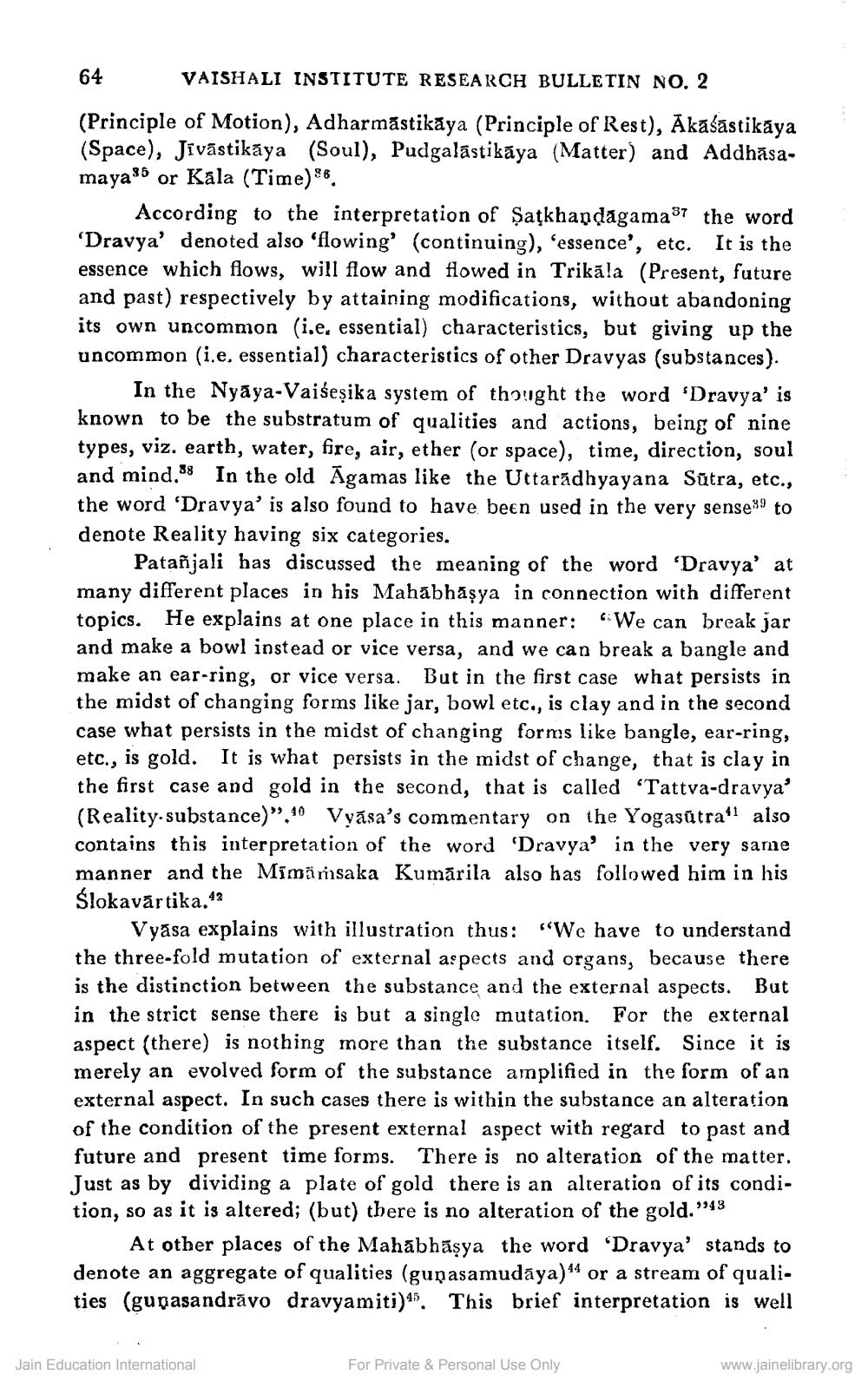________________
64
VAISHALI INSTITUTE RESEARCH BULLETIN NO. 2 (Principle of Motion), Adharmāstikaya (Principle of Rest), Akaśastikaya (Space), Jivāstikāya (Soul), Pudgalāstikāya (Matter) and Addhāsa. maya'5 or Kala (Time)
According to the interpretation of Şațkhandagama37 the word 'Dravya' denoted also 'flowing' (continuing), “essence', etc. It is the essence which flows, will flow and flowed in Trikāla (Present, future and past) respectively by attaining modifications, without abandoning its own uncommon (i.e. essential) characteristics, but giving up the uncommon (i.e. essential) characteristics of other Dravyas (substances).
In the Nyāya-Vaiseșika system of thought the word 'Dravya' is known to be the substratum of qualities and actions, being of nine types, viz. earth, water, fire, air, ether (or space), time, direction, soul and mind. In the old Agamas like the Uttarādhyayana Sūtra, etc., the word 'Dravya' is also found to have been used in the very sense to denote Reality having six categories.
Patañjali has discussed the meaning of the word 'Dravya' at many different places in his Mahābhāşya in connection with different topics. He explains at one place in this manner: "We can break jar and make a bowl instead or vice versa, and we can break a bangle and make an ear-ring, or vice versa. But in the first case what persists in the midst of changing forms like jar, bowl etc., is clay and in the second case what persists in the midst of changing forms like bangle, ear-ring, etc., is gold. It is what persists in the midst of change, that is clay in the first case and gold in the second, that is called "Tattva-dravya' (Reality.substance)”.40 Vyasa's commentary on the Yogasūtra'l also contains this interpretation of the word 'Dravya' in the very same manner and the Mimärsaka Kumărila also has followed him in his Ślokavártika.
Vyāsa explains with illustration thus: “We have to understand the three-fold mutation of external aspects and organs, because there is the distinction between the substance and the external aspects. But in the strict sense there is but a single mutation. For the external aspect (there) is nothing more than the substance itself. Since it is merely an evolved form of the substance amplified in the form of an external aspect. In such cases there is within the substance an alteration of the condition of the present external aspect with regard to past and future and present time forms. There is no alteration of the matter. Just as by dividing a plate of gold there is an alteration of its condition, so as it is altered; (but) there is no alteration of the gold."43
At other places of the Mahābhāşya the word "Dravya' stands to denote an aggregate of qualities (guṇasamudaya)" or a stream of qualities (gupasandrāvo dravyamiti). This brief interpretation is well
Jain Education International
For Private & Personal Use Only
www.jainelibrary.org




